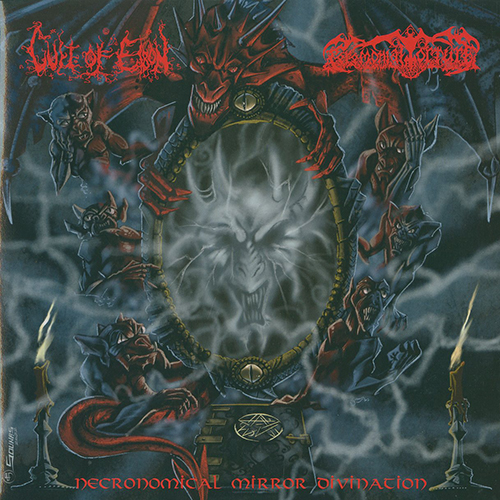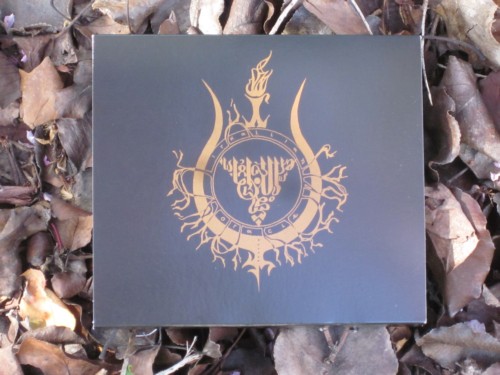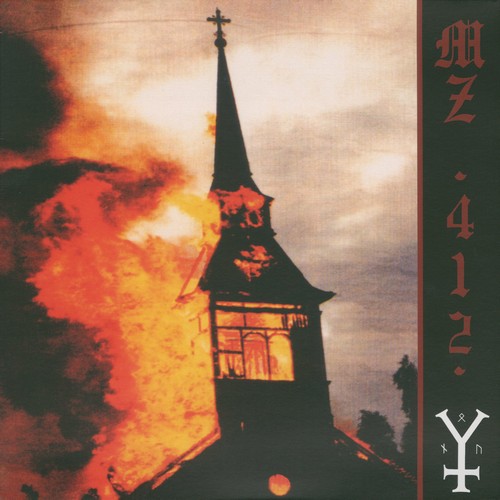We Have Your Beherit Needs Covered!
In Stock Now:
Beherit “The Oath of Black Blood” Picture Vinyl LP
Beherit “The Oath of Black Blood” Black Vinyl LP
Beherit “At the Devil’s Studio 1990” LP (NWN Edition)
Beherit “At the Devil’s Studio 1990” LP (KVLT Edition)
Beherit “Engram” LP
Beherit “Bardo Exist” LP + CD
Beherit “Engram” CD
Beherit “H418ov21.C” Digipak CD
Beherit “Electric Doom Synthesis” Digipak CD
Beherit “Beast of Beherit” CD
Beherit “Bardo Exist” Digipak CD
Beherit “At the Devil’s Studio 1990” Digipak CD
Beherit “Engram” MC
Beherit “Bardo Exist” MC
Beherit “At the Devil’s Studio 1990” MC
Beherit “The Oath of Black Blood” Zip Up HSW
Beherit “The Oath of Black Blood” TS
Beherit “The Oath of Black Blood” Tank Top
Beherit “The Oath of Black Blood” Pullover HSW
Beherit “The Oath of Black Blood” LS
Beherit “Lord Goat” TS
Beherit “Lord Goat” Tank Top
Beherit “Lord Goat” LS
Beherit “Demonomancy” TS
Beherit “Dawn of Satan’s Millennium” Pin
Goatvulva “Goatvulva” MC (Beherit Related)
At the Devil’s Behest: 30 Years of Black Blood
by J. Campbell
With the advantage of hindsight, it is now possible to scrutinize and interpret the cultural currents that converged in the late 1980s and early 1990s to become the genre now known as black metal. At the time, however, for the participants in that scene, still hidden deeply underground and scattered throughout the world, there were no blueprints, no scripts to follow. Each band simply strove to challenge the established order and usher in a stylistically heterodox movement dedicated to exploring the darker dimensions of the metal sound. A violent reaction to the tyranny of virtuosity and skill in metal—in particular, the increasingly mainstream and redundant death and thrash metal scenes—the early black metal movement emphasized passion and extreme ideology as the driving forces undergirding the music. Among the second wave bands that most convincingly exhibited this attitude was Beherit.
Hailing from Rovaniemi, the small capital of the Lapland province of Finland, Beherit began in the summer of 1989 when 16-year-old Marko Laiho (better known as Nuclear Holocausto Vengeance or, simply, Holocausto) met bassist Jari Vaarala (Demon Fornication) at a fest, and, while drinking together, decided on the spot to form a band. They named the band Horny Malformity—inspired by a porno video Demon’s brother had seen—but quickly changed it to Pseudochrist. A year earlier, Holocausto had played in a band called Trash Cruiser with a high school classmate named Janne “Demonos” Sova, who would later form the band Barathrum, and a drummer named Jari Pirinen (Sodomatic Slaughter). After a few months of rehearsals with a different drummer, Holocausto recruited Sodomatic Slaughter for his new band, and they began writing original material under the name Beherit—derived from the word for Satan in the ancient Syriac language, which Holocausto had seen referenced in LaVey’s Satanic Bible. Interviewed by Sepulchral Noise in 1991, Demon Fornication articulated the band’s philosophy: “We chose to be a Satanic band after we became aware of our Satanic consciousness. We Mankind: we shall ‘be as gods’ by freeing ourselves from godly tyranny. And we also became aware of the self-deceit of Judeo-Christianity and other herd-moralities and slave creeds. ‘Following the Left-Hand Path’ – the only possible way to us.”
Recorded to four-track cassette, on February 26, 1990, Beherit’s first demo, Seventh Blasphemy, is an unvarnished manifesto of impiety. Barely exceeding ten minutes, the demo contained a lengthy ritualistic intro and three frenzied tracks of untempered and profane wrath inspired by the early Brazilian thrash and deathcore sound. Holocausto became immersed in that scene after trading Finnish punk and hardcore LPs to Brazilian fans for Cogumelo and other underground Brazilian metal LPs. Seventh Blasphemy was an embryonic expression of the band’s intent, which would coalesce into something more potent in the course of that same year, especially a couple months later when Ludo “Evil” Lejeune, the founder of the Sarcófago Fan Club (to which Holocausto belonged), sent Holocausto a copy of Blasphemy’s Blood Upon the Altar demo. Even the band members’ stage names were not yet settled—on the Seventh Blasphemy demo they credited themselves as “Nosferatu” (Laiho), “The Last Slaughter” (Pirinen), and “Demon” (Vaarala)—and would continue to evolve over the next several releases. A month later, on March 28, 1990, Beherit recorded another tape, Morbid Rehearsals, intended only for the band’s close associates and not considered an official demo.
They practiced regularly at a shared rehearsal space subsidized by the government. There was little to do in the small city of Rovaniemi, and many young Finns pursued music as a cathartic outlet, particularly during the long, dark winters. Beherit’s progress was swift. Their first live performance was a contest sponsored by a radio show, and they won a free recording session at Studio Ala Ky—the only studio in Rovaniemi. On June 6, 1990, they went to Studio Ala to record what would become the Demonomancy demo. The studio was located in the home of sound engineer Pauli Ruuskanen, who provided valuable assistance to the inexperienced teenagers who had never before been in a studio setting. Ruuskanen also offered the use of a keyboard and helped with the creation of the intro featured on the demo.
With Demonomancy, Beherit surpassed the releases from just a few months earlier. Nearly 14 minutes long, the tape contained an intro followed by six tracks, divided across two sides labeled “Side of First Death” and “Side of Second Death.” Though stylistically similar to the earlier recordings, the band’s recent exposure to Blasphemy undeniably altered their approach. In addition to the improved quality of the recording due to the band’s use of an actual studio, Demonomancy was far better executed than Seventh Blasphemy. The aesthetic of the tape was different, too. Instead of the simplistic cover art used for the first tapes, Beherit used original artwork by Juha Vuorma, a local friend who was deeply into extreme metal and responsible for introducing the Beherit band members to a lot of new music in the early days.
On Demonomancy, Holocausto shed his earlier “Nosferatu” alias and adopted the new name Nuclear Holocausto of Bloody Vengeance, an overt nod to Brazilian legends Holocausto and Vulcano, bands whose earliest work directly influenced Beherit’s sound. Similarly, Demon changed his own name to Daemon the Seventh Devil of Fornication. These new, extended appellations were an homage to Blasphemy, whose Blood Upon the Altar demo had immediately possessed the young Finns. The two bands were, in essence, mounting a united front within the black metal underground. By 1990, most of the Brazilian bands responsible for ushering in the bestial black metal sound were drifting into more commercial territory, and Blasphemy and Beherit picked up where those bands left off.
There was mutual respect and camaraderie between the two camps. Holocausto made a habit of calling Blasphemy vocalist Black Winds almost weekly around that time. To avoid the exorbitant international calling fees, Holocausto would bring a phone into their rehearsal space and connect it to an open landline. The scheme worked for a while, but he was eventually caught and a metal cover was placed over the outlet to prevent any unauthorized use. As further evidence of the connection between the two bands, on one of the flyers advertising Demonomancy, Holocausto scrawled “Hello Black Winds!” before Xeroxing so that it would be reproduced on every copy. Among the bands’ many overlapping qualities were the inclusion of ominous and atmospheric keyboard intros; the appropriation of a grindcore sensibility in the service of Satanic black metal; the use of minimalist black corpse paint on stage; and reckless, punched-in guitar solos that cut through the noisy density of the underlying riffs. The Beherit demo was more ramshackle and disorderly than Blasphemy’s, likely due to the fact that Beherit operated as a three-piece and the Finnish teens were not as well-trained as their Canadian brethren. But what Beherit lacked in technical ability and recording resources, they compensated for with adolescent zeal and Satanic fervor.
As the primary songwriter, Holocausto focused his attention on creating atmosphere, which he said was “the most important thing” in black metal. Driven by blackened passions, Holocausto sought nocturnal inspiration for his work. Speaking to Hammer of Damnation zine in 1991, he said, “I can get real dark feelings and emotions when I’m alone and it’s over 12 a.m., the cemetery of darkness, a gloomy forest or you’re looking up from a mountain down there. Loneliness creates emotion to darkness. I love it, I love it… I’m on the shore of an enormous ocean, I can feel that call again and again.”
The demo sold well (approximately 400 copies) and drew considerable attention. Beherit continued to rehearse several times a week and play the occasional local gig. Playing shows was a requirement for bands that received funding from the Finnish government. Because most of the metal fans in Rovaniemi were young, metal shows at that time were usually all-ages events. As such, they frequently took place at youth centers and sports venues as opposed to bars or nightclubs. One of Beherit’s more notable gigs during this time was an outdoor daytime performance at a shopping mall. Beherit was the only metal band performing at the event, which was organized by a local radio station; the other bands played either pop, punk, or rock. Surviving video footage depicts an odd scene: three long-haired teenagers awkwardly set up outside a storefront, furiously playing to a crowd of people standing idly by, gawking with bewildered amusement. Only a handful of metalheads sitting in the front appear to be genuinely appreciating the spectacle. Meanwhile, a steady stream of perplexed shoppers rush into the adjacent mall entrance, looking confusedly over their shoulders as they pass. The strange juxtaposition showcases how extreme the band was at the time, and also how young.
Following the release of Demonomancy, a German label called Shithouse Records, run by brothers Roland and Oliver Schaffelhuber, contacted Beherit about a possible release. The label had put out a couple of grindcore 7”s earlier that year before adopting the new name Turbo Music. In October of 1990, Beherit returned to Studio Ala for another session. The tracks they recorded would end up on the band’s first EP, an untitled picture 7” that has come to be commonly referred to as Dawn of Satan’s Millennium. It was with that EP that Beherit established a truly distinctive sound. Though still drawing influence from Blasphemy, the Dawn of Satan’s Millennium EP was somber and richly atmospheric. This was partly owing to Holocausto’s reliance on a new vocal style in which he frequently intoned the lyrics in a macabre near-whisper, which he admitted was inspired by Treblinka/Tiamat.
In the first of what would be multiple underhanded moves committed by Turbo, the label released the EP as a picture disc without consulting with the band about the layout. On its own initiative, Turbo procured the infamous goat/pentagram image from French artist Christophe Moyen. Although Holocausto and Moyen would later become close friends, at the time, they did not know one another. A couple months after the October session, Beherit returned to Studio Ala and recorded two songs: “Werewolf, Semen & Blood” and a cover of Blasphemy’s 40-second blitz, “War Command.” The band was dissatisfied with the recording of the song “Dawn of Satan’s Millennium” and planned to replace it with “Werewolf, Semen & Blood,” but Turbo refused to make the change. As an added slight, Turbo omitted the song “Paradise, of thy Demonic Host,” which was also recorded during the October session and intended for inclusion on the EP.
Under the terms of their agreement, Turbo had the ultimate authority to decide what to release. Although the label originally agreed to put out Beherit’s debut album, when the time came to record it, according to Holocausto’s recitation of the story, Turbo only sent the band a couple hundred dollars. With that meager amount, the band could not possibly record a full album. They began the recording process but only spent a single day in the studio, and the album remained incomplete and unreleased until 2011 when it was officially issued as At the Devil’s Studio 1990.
With an insufficient budget, Beherit could not produce a recording of sufficient quality to follow up the promise of their prior releases. Adding to the injury, Holocausto maintained that the Schaffelhuber brothers never paid Beherit royalties for the nearly 4,000 copies of the EP that Turbo sold. The band and the label were at an impasse, and because Beherit was still under contract, Turbo, disregarding the band’s resistance to the idea, unilaterally chose to compile the Demonomancy demo and the Dawn of Satan’s Millennium EP as one full-length “album.”
Holocausto first learned about the impending release of The Oath of Black Blood from a friend, the visual artist Luxi Lahtinen, shortly before it was scheduled to come out. Upon learning that the label was releasing the compilation, Holocausto vehemently expressed his displeasure with the idea, but due to the nature of the contract, the band ultimately had no recourse. Mistrustful of Turbo, on July 6, 1991, Beherit recorded a session at Tico-Tico Studio in Kemi, Finland. They used the recordings for a new demo entitled Down There… but released it under the name The Lord Diabolus to avoid further contractual disputes.
To the band’s dismay, Turbo moved forward with the release of The Oath of Black Blood as a full-length LP using remixed versions of the Demonomancy and Dawn of Satan’s Millennium recordings. Turbo again commissioned cover art from Moyen that Beherit neither requested nor approved, and the back of the LP jacket was to feature a photo of Holocausto alone; the other members of Beherit were conspicuously absent from the LP layout. In the picture, taken at the Tavivaara cemetery where Beherit often hung out and which was a preferred location for their photo shoots, Holocausto appears with minimalistic black corpse paint encircling his eyes, wearing gloves and bullet belts, and holding a heavy chain. He is wearing a Salem t-shirt that previously belonged to Dead, of Mayhem, and which Euronymous sent to Holocausto following Dead’s suicide earlier that year.
On August 23, 1991, Beherit performed in Oulu, Finland at the Day of Darkness fest alongside a cast of Finnish underground luminaries: Amorphis, Impaled Nazarene, Belial, Demigod, Black Crucifixion, and Sentenced. The event was organized by Jarno Koskinen, the vocalist of Belial, and took place at a youth center called Urheilutalo, which literally translates to “sports house.” Indeed, a basketball hoop can be seen in the background in photos of the event. The show would prove to be a turning point for Beherit. Earlier that year, Demon Fornication had quit the band, and Holocausto moved to Kuopio, some 500 km from Rovaniemi, making regular rehearsals nearly impossible. At a prior show in Nokia, Arjo Wennström of Black Crucifixion had filled in on bass, but for the Day of Darkness Fest, Holocausto and Sodomatic Slaughter elected to perform as a two-piece and rehearsed only a few times in Sodomatic Slaughter’s parents’ garage in the days leading up to the show. Notwithstanding these limitations, Beherit’s performance was highly regarded. Shortly after the fest, however, Sodomatic Slaughter, who was also playing drums for Black Crucifixion at the time, parted ways with Holocausto, abruptly ending the original incarnation of Beherit.
A month later, Turbo released The Oath of Black Blood. In terms of sheer numbers, the release proved successful, with Turbo ultimately selling several thousand copies, while also licensing it to JL America for release in the United States. The Oath of Black Blood was not the newly recorded debut album that Beherit wanted to present, though many fans would mistakenly regard it as such. It has since been re-pressed many times, selling tens of thousands of copies, and is now regarded by most as a quintessential example of the bestial black metal sound. The band now accepts the release, as shown by their full authorization and close involvement with NWN! in the creation of this 30th anniversary edition. And although the band may have initially disapproved of it, The Oath of Black Blood nevertheless established Beherit among the preeminent second wave black metal acts and provided a platform for Holocausto to continue releasing increasingly eccentric recordings in the name of Beherit.




